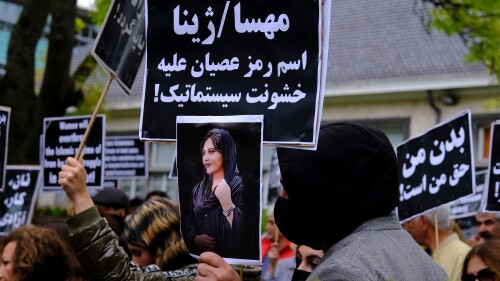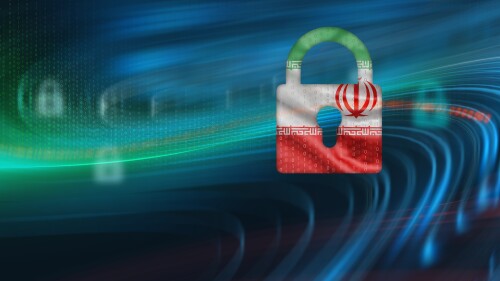For decades, the United States has struggled to develop an effective policy toward Iran. Engagement with the Islamic Republic has failed to end Tehran’s terror support or its nuclear drive. While low-ranking State Department desk officers may meet opposition leaders or civil society activists, both Democratic and Republican administrations shy away from a more open embrace of Iranian opposition leaders. This should change.
Previous administrations demurred for two reasons. First, they questioned the relevance of opposition leaders outside Iran and, second, diplomats argued that high-level engagement with one leader would open the floodgates to every leader since the United States could not favor one over another.
Both reasons are wrong. Iranians are disillusioned after 45 years of clerical rule. Gradual reform is impossible because the Islamic Revolutionary Guard Corps serves as the supreme leader’s Praetorian guard. Because of internal repression, the most vibrant debates occur outside the country.
Nor are all Iranian opposition figures or civil society activists equal. Iranians despise the Mujahedin al-Khalq, a cult that pays greedy former officials for endorsements but has no following inside Iran. Nor do leaders who organize around ethnicity have national following.
Reza Pahlavi, the son of the late shah, is an exception. He has nationwide name recognition, and his reputation grows more positive as the Islamic Republic’s failures lead Iranian citizens to look at the monarchy as Iran’s golden age. Some Iranians try to dismiss Pahlavi based on criticisms of his father, but this is not fair. Not only are they not the same person, but Pahlavi has consciously learned from the past. He acts more as a coalition builder than a claimant.
Ignoring Pahlavi’s potential signals that Washington is prepared to make the same mistake three times
Ignoring Pahlavi’s potential signals that Washington is prepared to make the same mistake three times. Prince Hassan of Jordan, the brother of late King Hussein, spent much of his boyhood in Iraq. Iraqis across the ethnic and sectarian divide did not necessarily want to resume monarchy after Saddam’s ouster, but they did believe Hassan could play a role in a transitional council or constitutional convention. King Abdullah II feared competition, however, and a heightened platform for his uncle, and so agitated against Hassan. President George W. Bush-era National Security Council aide Zalmay Khalilzad wanted a more central role for himself and was happy to shut out Hassan. The rest is history: Absent any unifying authority, insurgency and sectarian violence pushed Iraq to the brink of civil war.
The same was true with Afghanistan. In 1973, Zahir Shah’s cousin Mohammad Daoud Khan overthrew the monarchy in favor of a Soviet-backed republic while the king was on a visit to Italy. As Afghans fought foreign invaders, faced civil war among Mujahedin commanders, and suffered Taliban rule, the king remained in Rome, his reputation as ruler growing stronger by comparison.
After the U.S.-led invasion, Afghans hoped for the king’s return. At 87 years old, he posed no long-term threat, but he carried immense symbolic weight and could be a unifying figure. Alas, Khalilzad once again stepped in to block any role for Zahir Shah as Afghans speculated the highest-ranking Afghan American official resented the king’s popularity and perhaps hoped for a leadership role himself. Ultimately, the king died six years later, his continued exile a missed opportunity to unify the country.
As the Islamic Republic both hemorrhages legitimacy and as its clerical dictator, the 85-year-old Ali Khamenei, faces his own mortality, Washington should reconsider Pahlavi. He is not only a figure of exile politics. Inside Iran, Iranians chant his name in the streets during protests, despite the risk that such defiance carries with a regime that punishes even mild dissent severely. Protesters in Tehran, Isfahan, Shiraz, and Mashhad have invoked his name alongside slogans rejecting both the Islamic Republic and its so-called reformists. Among other praise for the Pahlavis, Iranians chant, “Crown Prince, where are you? Come to our aid!”
A recent Empirical Research and Forecasting Institute survey found 80 percent of respondents preferred Reza Pahlavi over current political leaders—a direct challenge to the regime’s legitimacy. Despite this, Washington remains hesitant, fearing a “return to monarchy,” ignoring his stated commitment to a secular, democratic Iran.
[Pahlavi] opposes Western-led regime change but seeks partnerships between the West and the Iranian people.
In reality, Pahlavi emphasizes the need for a structured transition plan, including a referendum to allow the Iranian people to determine their future governance through a legitimate and inclusive process. His approach focuses on five key areas: maximizing support for domestic resistance, applying maximum international pressure on the regime, mobilizing the Iranian diaspora, facilitating defections within the regime’s ranks, and outlining a political and economic roadmap for a post-regime Iran. He opposes Western-led regime change but seeks partnerships between the West and the Iranian people.
To meet with Pahlavi at senior levels would recognize his legitimacy and sow fear among regime ranks by forcing Tehran to recognize that Washington is no longer susceptible to its anti-Pahlavi propaganda. Engaging Pahlavi would signal that the United States supports the Iranian people’s aspirations for self-determination and democratic governance.
Too often, American officials lack imagination. They see the Islamic Republic as the natural pinnacle of Iranian political evolution and fail to understand the anomaly it represents. Its collapse is inevitable. A democratic Iran aligned with the West would reshape the Middle East’s strategic balance. It would dismantle the Islamic Republic’s terror network, and enable countries like Lebanon, Iraq, and Yemen to return to normalcy.
Picking up the pieces from more than four decades of clerical rule and corruption, however, will not be easy, Just as in Iraq and Afghanistan, unifying figures will be crucial as Iranians debate their future. President Donald Trump and Secretary of State Marco Rubio should meet with Reza Pahlavi. Failure to recognize his unifying role will represent a lost opportunity—one that America cannot afford.







